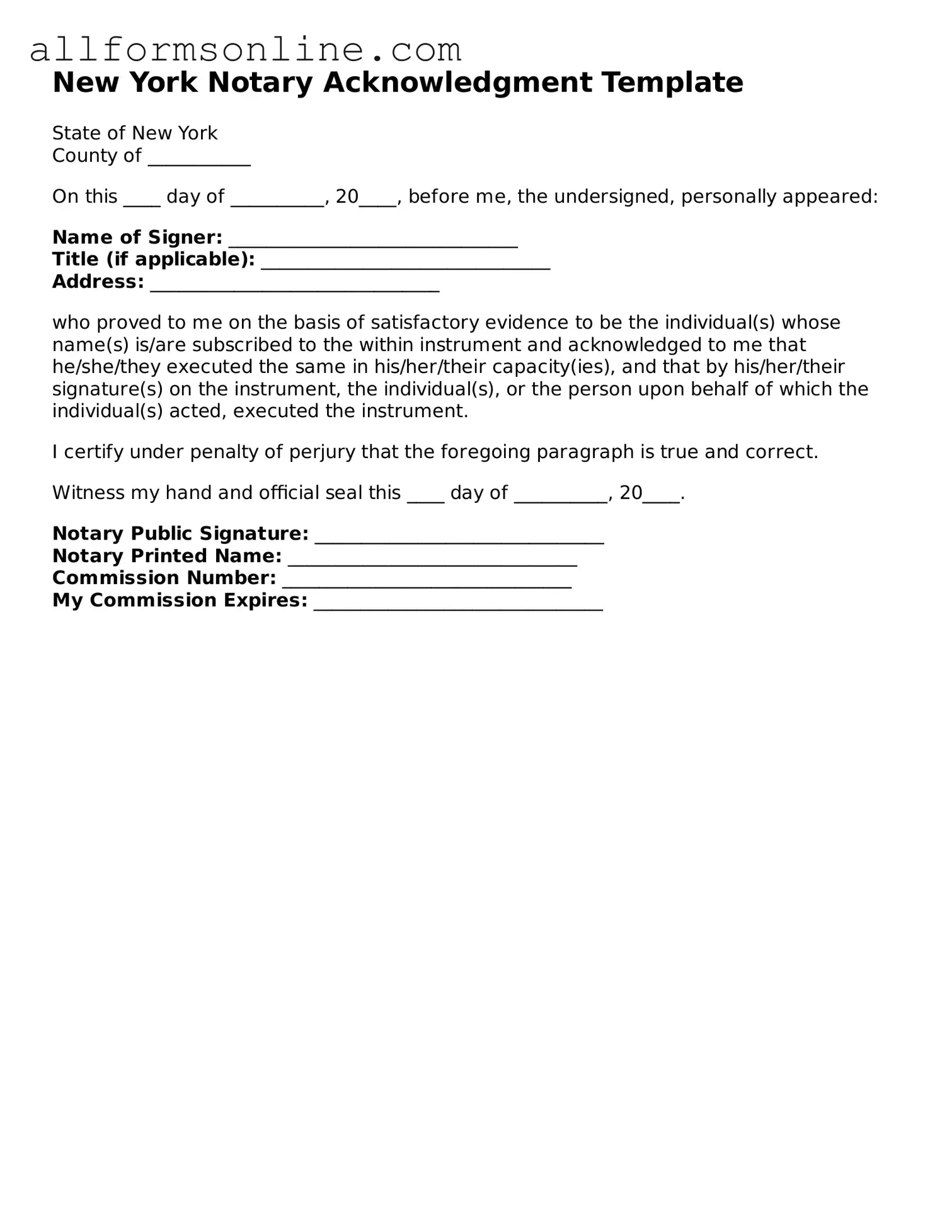What is a New York Notary Acknowledgement form?
The New York Notary Acknowledgement form is a document used to confirm that a signer has willingly signed a document in front of a notary public. This form serves as proof that the notary has verified the identity of the signer and that the signing took place voluntarily. It is commonly used in real estate transactions, legal documents, and other formal agreements.
Why is a Notary Acknowledgement important?
A Notary Acknowledgement is crucial because it adds a layer of authenticity to a document. It helps prevent fraud by ensuring that the person signing is indeed who they claim to be. This form also provides legal protection for both the signer and the parties involved in the transaction, as it can be used as evidence in court if disputes arise.
Who can serve as a notary public in New York?
In New York, a notary public can be anyone who meets certain requirements. This includes being at least 18 years old, a resident of New York State or having a business in the state, and passing a notary exam. Additionally, the individual must apply for a notary commission through the state and take an oath of office.
What information is required on the Notary Acknowledgement form?
The Notary Acknowledgement form typically requires the name of the signer, the date of the acknowledgment, and a statement affirming that the signer appeared before the notary. It also includes the notary's signature, seal, and commission expiration date. Ensuring all this information is accurate is vital for the document's validity.
Can a Notary Acknowledgement be done remotely?
Yes, New York allows for remote notarization under specific circumstances. This means that a notary can perform an acknowledgment via audio-visual technology. However, both the signer and the notary must be in New York State at the time of the signing. Always check the latest regulations, as remote notarization rules may evolve.
How long is a Notary Acknowledgement valid?
A Notary Acknowledgement does not expire on its own. However, the document it accompanies may have its own validity period. For example, a real estate transaction might have specific timelines that must be adhered to. It's important to understand the context of the document to ensure it remains enforceable.
What happens if a Notary Acknowledgement is improperly completed?
If a Notary Acknowledgement is improperly completed, it can lead to complications. The document may be deemed invalid, which could cause issues in legal proceedings or transactions. If you discover an error after the fact, it may be necessary to have the document re-signed and acknowledged correctly to ensure its legality.
Can a notary refuse to acknowledge a document?
Yes, a notary can refuse to acknowledge a document for various reasons. If the signer appears confused, is unable to provide valid identification, or if the notary suspects fraud, they may decline to perform the acknowledgment. A notary's primary responsibility is to ensure that the process is legitimate and secure.
Is there a fee for notarization in New York?
Yes, notaries in New York are allowed to charge a fee for their services. The maximum fee for a standard acknowledgment is $2 per signature. However, notaries can set their own fees for additional services, such as travel or specialized documents. Always confirm the fee beforehand to avoid surprises.
